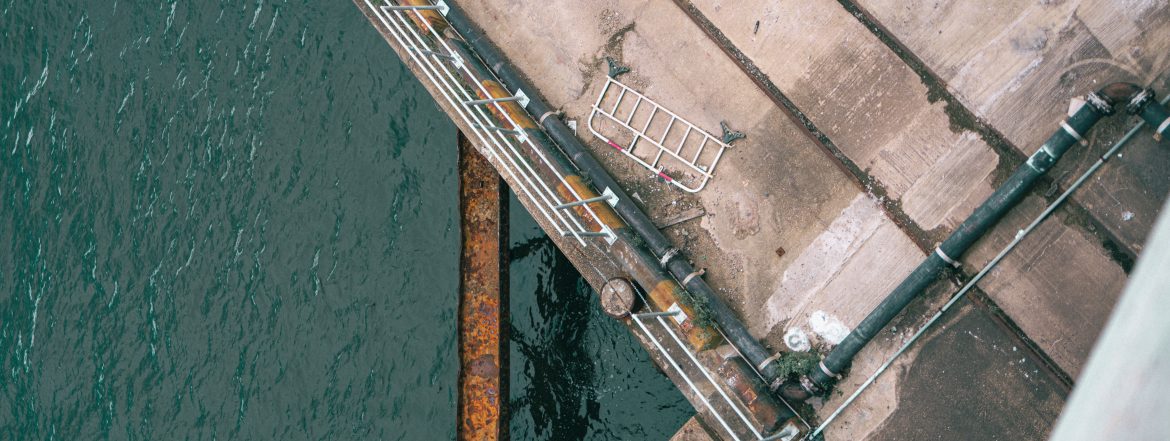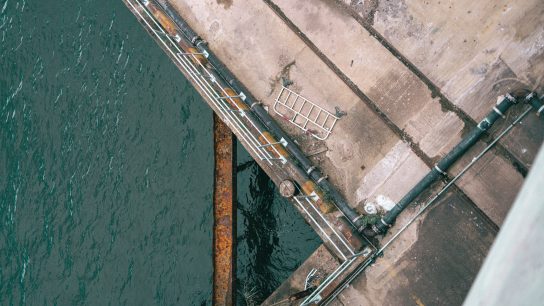Collecting Stories from Black Vallejo: An Interview with Julie Sze
by
Julie Sze (UC Davis) spoke to UCHRI Research Grants Manager, Sara Černe, for a new Foundry series highlighting the work of the Institute’s recent grantees and the methods, unorthodox approaches, and challenges they have employed and encountered. The interview took place over Zoom and was edited for length and clarity.
“How do we do [community engaged research] in a way that is restorative and reparative as opposed to just business as usual? The University doesn’t make it very easy. […] We actually just said no, the community owns this resource.”
Tell us about your project; how do environmental justice and anti-police brutality movements come together in South Vallejo and what role does the area’s militarized history play in the shaping of this place?
My Collaborator Javier Arbona (Assistant Professor of American Studies and Design at UC Davis) and I wrote a piece that looks at the history of anti-black racism in South Vallejo and how it plays out in different eras in the landscape. The argument is that Vallejo, one of the first capitals of California, was defined by the U.S. military. We argue that the military, the police, development politics, and privatization are all part of a long history of anti-black racism that impacts the communities in South Vallejo, a majority-black working class community, particularly hard. We look at key moments where there was a lot of struggle over race, racism, power, and landscape. In World War 2, a lot of anti-black racism was rooted in official segregation in the Navy, culminating when white Navy personnel attacked black sailors. These acts were not exceptional; they were connected to what happened in the Zoot Suit Riots in LA around the same time. Our project looks at how top-down policing, surveillance, and militarization morphed and transformed in Vallejo, as well as at how it plays out in the privatization of the waterfront, most recently with the siting of a cement factory in the community. This research ties into our mutual work with a community partner, LaDonna Williams of All Positives Possible, who fought the cement factory and has been a very strong environmental justice advocate.
“A project should always leave the community and everybody involved stronger, more resilient, more powerful, and more connected. Projects and events can help build.”
Collecting Stories from Black Vallejo: Migration, Pollution, Resistance knits together these different moments where spatial and racial hierarchy and violence are enacted through policing and surveillance and militarization. These institutions (police and military) control the landscape in very anti-black ways, which continue to reverberate in economic and urban development projects. We look in between those two moments of World War 2 and the contemporary cement factory, looking at urban renewal in the sixties and so on, and showing that that history is not over. It seems obvious, but it echoes over and over again, and you can’t understand what contemporary controversies mean without understanding the historical, racial and spatial context. As James Baldwin put it:
“One of the things that has always afflicted the American reality and the American vision is this aversion to history. History is not something you read about in a book; history is not even the past, it’s the present, because everybody operates, whether or not we know it, out of assumptions which are produced only, and only by, our history.”
What have been some of the main challenges of working with community partners within the framework of the university and how have you tried to address the question of ownership and other power dynamics that can sometimes color such collaborations?
Professor Arbona and I wrote a very academic piece for a handbook in which we talk about anti-black racism and black activism against it, situating our research in waterfront communities globally. We were interested in working with the community partners that we already had, and both of us have separate relationships with LaDonna because of Javier’s work in Vallejo and the Bay area around militarization, and my connection through environmental justice. When LaDonna and Javier and I were talking about how to make this more public, we were very excited to see the UCHRI Engaging Humanities grant because we thought it fit well with the agenda of both—public humanities and the specific theme of upheaval. We reached out to David Pellow who is one of the most important scholars of environmental justice, and who has written about policing.
One of the main challenges of working with community partners is thinking about how to do the work in a way that doesn’t recreate extractive research practices because historically, a lot of communities of color and disenfranchised and working class communities have been the subjects of research rather than the co-producers of knowledge and so we were very attentive to making sure that we didn’t end up reenacting that. LaDonna has worked with lots of different kinds of institutions and has actually had some issues with academic researchers.
So this was something that was very important to all of us: How do we do this ethically, how do we do this responsibly? How do we do this in a way that is restorative and reparative as opposed to just business as usual? The University doesn’t make it very easy. When you draw up partnership agreements, write the MOU, and arrange contracting, there’s very explicit language that says the products of this research belong to the university. The question of who owns the research is structured in a way that’s tied to how research has been developed, which is tied to histories of knowledge, production, and extraction, which are not favorable to politically and historically disenfranchised communities, especially black communities. So we had to be very attentive to those politics, and in a very concrete way, with the MOU and the contracting process. We actually just said no, the community owns this research. We actually signed it so that it didn’t go to the default. There are a lot of organizations like Imagining America, Facilitating Power (their Spectrum of Community Engagement to Ownership tool is particularly helpful), and UC Irvine’s Community Resilience Projects that think about these issues, so we’re not working in a vacuum.
We all agreed that everything had to be equitably distributed. We said that everything had to be public, and talked about who the different audiences were, and we wanted to have an event in Vallejo as opposed to on campus, which would have been the easier thing to do. It’s symbolically important that we do a lot of the work in the community and show up and do the work well even if it takes more time. Do it right rather than expeditiously.
In your experience, what has been most crucial to cultivating relationships with community partners and building their trust?
You have to actually have a relationship that’s built over time. LaDonna and I have known each other since 2009, and she at some point had a negative experience with a UC Davis researcher. Sometimes community members have a bad experience with somebody affiliated with an institution, and then associate it with the whole institution. UC Davis has historically been the handmaiden of industrial agriculture. It was called “the Farm.” This history has impacted the perception of many disenfranchised communities in California, especially farmworker communities. This is not related to the Vallejo project, but it’s similar in terms of the hesitation, the caution, the perception. It’s not enough to just say, “Oh, well, that person is unaffiliated with me.” If the person is from the UC, they stand for the UC in the eyes of community partners.
“This is a lifelong thing. You can’t just come in, pop in and pop out, this is a relationship. So if you’re not going to start with an intention of seriousness, then don’t start it.”
I’ve been working with communities working against environmental racism and for environmental justice for 28 years, having come out of environmental justice movements from my undergrad, but I still have to build the relationship. That means showing up. That means talking to people, that means checking in, even when there’s no active project. Just checking in: How are you doing? What’s happening? Just talking. I spent a lot of time trying to build and repair the relationship LaDonna had to UC Davis and so when the cement factory came up, she said, “Hey, can you come and talk to our community about the history?” So I went to Vallejo and I spoke at a community gathering, and it was really important for her that I did that, and for me, showing up wasn’t even a question. That’s how I’ve been trained; it’s my worldview; it’s deeply embedded in me. I was an environmental justice activist before I was a grad student or a scholar, so for me, that’s just common sense. But I don’t necessarily think that a lot of people who didn’t come out of those contexts would default to that.
I remember when I was directing the Environmental Justice Project, one of the activists asked, “Are you with us for life?” This is a lifelong thing. You can’t just come in, pop in and pop out, this is a relationship. So if you’re not going to start with an intention of seriousness, then don’t start it. Unless you’re transparent about being transactional.
There’s a collective in the Bay area called Movement Generation and they have a wonderful visual of building the just transition, which talks about climate justice as addressing the problem of extraction of all kinds. One of the solutions is a regenerative model based on cultivating care and community relationships. Something that’s not based on plunder, that produces value, and that’s sustainable. With research and knowledge production, the process can be extractive or it can be a regenerative one, one that builds community and cultivates care and creates a sense of solidarity. That’s what I’m always guided by. With the Vallejo project, the community was leading and received a bigger portion of the funds. Equality is not necessarily enough, there needs to be reparative and restorative justice.
What do you see as the main impact of this work, how has grant funding helped you achieve it, and what kind of afterlife can you imagine for the project?
The impact of the work and the UCHRI grant is that it gave us something to work on in a way that helped build the capacities of everybody involved. It gave something to the community members and to the graduate student who was involved. A project should always leave the community and everybody involved stronger, more resilient, more powerful, and more connected. Projects and events can help build. They always do. They build the community, and sometimes they’re temporary or short-lived, but sometimes they come back as another version of something. There’s an ever-present way of doing this ethically and well, of teaching and learning and having human relationships that are strengthened through such projects. These are interpersonal relationships that are ongoing. It’s not like an afterlife.
Banner image credit: Ryan Kwok


